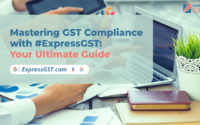GST return types and their due dates
The deadline for reporting quarterly Goods and Services Tax returns (GSTR)-1 is July 31. There are numerous types of GST returns, and as a registered business owner or self-employed professional subject to GST, you must remember the dates for each. Continue reading to find out more.
What are the types of GST returns?
You do not have to populate the forms manually every time you file returns. Details about your income, services, vendors, etc., are saved when you enter them the first time. This information is used to generate the tax amount the next time you file. Your previous data and your vendors’ cumulative inputs are used to arrive at the final GST figures.
What is CGST or Central Goods and Services Tax?
The central government levies CGST on intra-state goods and service transactions. The central government collects the revenue generated by the Central Goods and Service Tax. It is levied along with the state or union territory GST and revenue is shared between the state and the centre.
For example, if you are a Bengaluru-based dealer and are selling to another dealer in Bengaluru, CGST and SGST will both be applicable since it’s an intra-state sale. If the transaction is worth Rs. 30,000 and attracts 18% GST, then 9%, which is Rs. 2,700 of the tax amount, is collected as SGST by the state government and an equal amount is collected as CGST by the Centre.
Types of GST returns to file
- GSTR-1: You have to file this return by the 11th of every month or the 13th of the month following a quarter, mentioning your outward sales figures. There are 13 sections under this form of returns.
- GSTR-3B: You have to file this return every month, noting down the summary of your outward supplies along with the input tax credit.
- GSTR-4: If you are a composition dealer, you must file your returns annually.
- GSTR-5: This GST return applies to NRI business owners.
- GSTR-6: If you are an Input Service Distributor, you will have to file the GSTR-6.
- GSTR-7: This return is applicable if the GST for your services has been deducted at the source.
- GSTR-8: As an e-commerce operator, if you collect tax on the goods you sell, you will have to file GST returns using GSTR 8.
- GSTR-9: This category is for normal taxpayers filing returns annually and registered under the GST system.
- GSTR-10: This is the final return you will have to file if your registration is cancelled or surrendered.
- GSTR-11: You will have to use this form to quote details of inward supplies if you have been issued a unique identity number.
What are the due dates for the various types of GST returns?
Now that you know the details about the varied types of GST returns remember the deadlines for filing each to avoid late fees and interest charges.
- GSTR-1: the 11th of every month for the previous month, or the 13th of the month following a quarter
- GSTR-3B: 20th of the next month for the previous month
- GSTR-4: April 30, when the financial year for which the returns are being filed ends
- GSTR-5: 20th of the next month for the previous month
- GSTR-6: 13th of the next month for the previous month
- GSTR-7: 10th of the next month for the previous month
- GSTR-8: 10th of the next month for the previous month
- GSTR-9: December 31 of the next financial year for the previous financial year
- GSTR-10: Within three months from the date of cancellation or date of cancellation order, whichever is later
- GSTR-11: 28th of a given month, following the month in which the statement is filed
A couple of years ago, the government announced the introduction of two new forms, Form GST ANX-1 and Form GST ANX-2, under the simplified GST returns system. The GST ANX-1 is an annexure to the main GST returns, containing details of all outward supplies, inward supplies liable to reverse charge and import of goods and services.
Details in this annexure will have to be reported invoice-wise (except for B2C supplies) on a real-time basis on the GST portal. This data will be available for the recipient of supplies to take necessary action in their Form GST ANX-2.
Taxpayers with a turnover of up to Rs. 5 crore will have to use these new annexures to file their GST returns every quarter. Using this simplified system, those with a turnover of more than Rs. 5 crore can file GST returns monthly without hassles.
Filing a GST return is mandatory, even if you do not have to pay any taxes. This means you can file a nil return if you arrive at zero GST dues for a quarter or month. You cannot file a current return if you have not paid or filed the earlier returns. That’s why you need to be diligent with GST payments. To evade cascading late fines, you need to meet varied types of GST return deadlines and expand your business while complying with the law.



